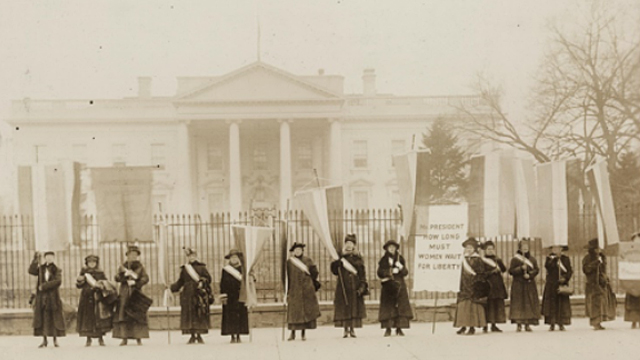
With thanks to the Merion Meeting for submitting the content for this article in recognition of the 100th anniversary of the 19th amendment. During the Saturday, October 3rd virtual event, facilitated by Ross Mitchell, Pat Jordan performed the role of Carrie Chapman Catt, president of the National American Woman Suffrage Association. The event was organized by Merion Meeting’s History and Archives Committee and was paired with an article on local Quakers who participated in the protests and demonstrations for universal suffrage.
Suffragists come to life on Zoom at Merion Meeting
It was originally planned as a live event, but the pandemic interfered. So, Merion Meeting revised the event featuring Pat Jordan in the role of Carrie Chapman Catt for Zoom and went ahead with a digitally reconfigured program.
On Zoom, Pat shared Catt’s life story and her efforts to advance American women’s right to vote. As president of the National American Woman Suffrage Association, Catt worked for a constitutional amendment, not just state-by-state voting changes, and welcomed Black members to this organization.
The 19th amendment, adopted on August 26, 1920, declared that: “The right of citizens of the United States to vote shall not be denied or abridged by the United States or by any State on account of sex.” After this victory, Carrie quickly founded the League of Women Voters.

The hour-long Zoom session was managed by the technically-astute Melinda Yin and attracted 20 viewers.
The History and Archives Committee is staffed by Marge Dawson, Bob Sutton, Ross Mitchell, Melinda Yin, and Janet Frazer.
Local Quaker Suffragists – by Merion Member, Janet Frazer
From the beginning of the movement for equal rights, Pennsylvania Quakers played a significant role. Although documentation of their role in the Suffrage movement of the early 20th century is slim, here are a few suffragists from our area.

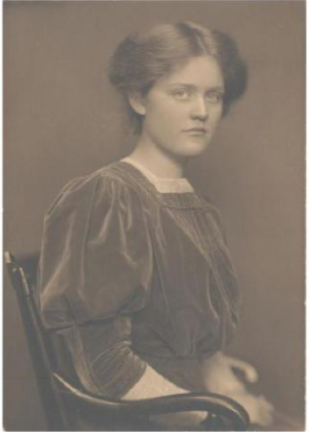
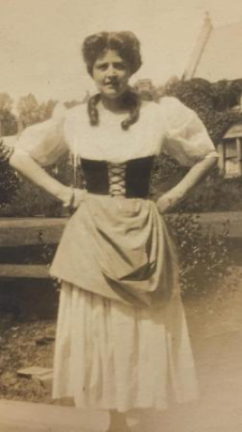
Mary Worthington was a student at Bryn Mawr College, where she was president of the College Equal Suffrage League. In that role, she invited Anna Howard Shaw and Emmeline Pankhurst for tea in 1909. Mary and her aunt, M. Carey Thomas, traveled to Buffalo in 1908 to attend the 40th annual convention of the National American Woman’s Suffrage Association. “I was crazy to go,” wrote Mary. “All the great people in the suffrage world were there.” Mary died young after starting medical school.


Mary Winsor and her sister, Ellen, were Quakers from Haverford (though Mary later quit meeting). Mary was a founder of the Pennsylvania Limited Suffrage Society and took part in the Watchfire demonstration, spending five days in jail in January 1919 for her participation. She was also arrested for picketing in September 1917 at Lafayette Square and sentenced to 60 days in the Occoquan Workhouse.

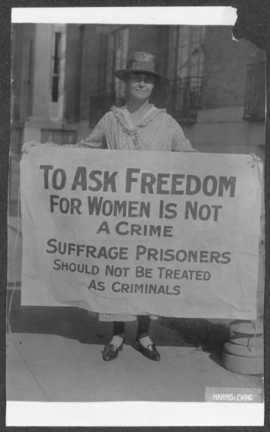
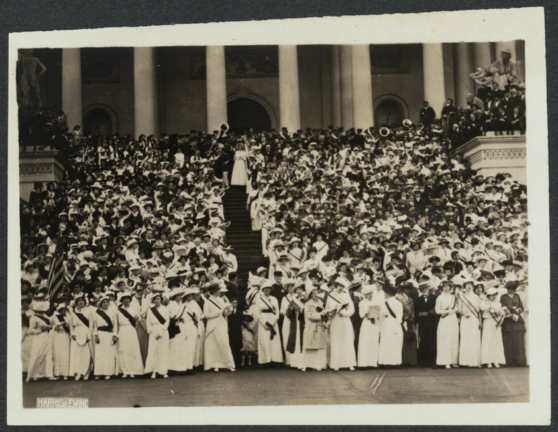
Mrs. Edmund C. Evans (née Rebecca Winsor), Ardmore PA
Mary’s younger sister, Rebecca (1879-1959), was a member of Radnor Monthly Meeting* and graduated with the 1898 class of Agnes Irwin. She joined the National Woman’s Party and picketed the White House. She and five others from Philadelphia were eventually arrested in February 1919 for burning Woodrow Wilson in effigy. As a member of the Women’s Peace Party, she supported calls to educate “the Main Line barbarians” from the doctrine of war.
*Merion Meeting was a preparatory meeting to Radnor Monthly Meeting
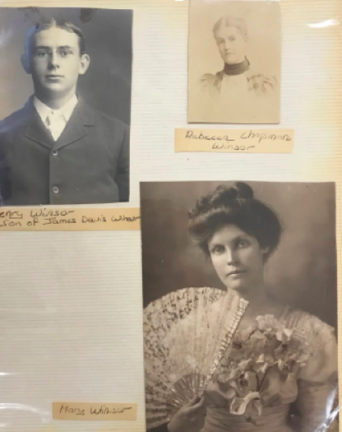
Martha Washington Moore (no image) was a member of Radnor Monthly Meeting; she was convinced in 1908 and transferred to Green Street in 1926. Unmarried, educated, and independent, Moore became a social worker and, as a devout Quaker, was dedicated to philanthropy and good works through her Quaker community, the Philadelphia Religious Society of Friends. She was a member of the Committee on Philanthropic Labor and also the Chairman of the Sectional Committee of the Philadelphia Young Friends Association.
It is no wonder that Moore was a champion of women’s rights and worked earnestly with other like-minded women to help acquire the franchise for women. She was even appointed to the suffrage committee within her church. In addition, Moore was a charter member of the Congressional Union, and on August 6, 1918, she was arrested for “obstructing traffic,” along with forty-six other suffragists who were picketing the White House. They were given ten to fifteen days in prison after refusing to pay the fine. On January 27, 1919, Moore and six other suffragists were arrested and chose a sentence of five days over the fine after participating in a watchfire demonstration.
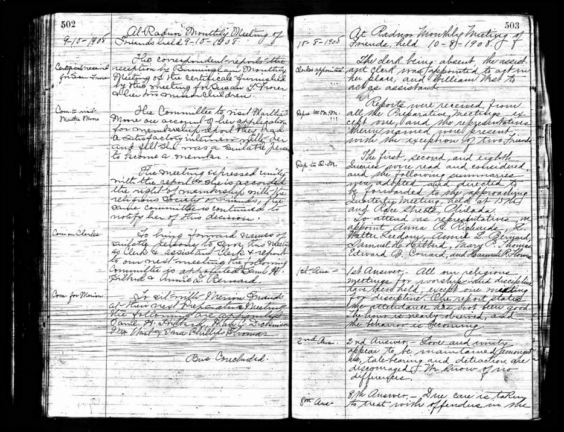
Sources
“Appendix 4: Suffrage Prisoners.” Center for the Study of Women and Gender. https://chswg.binghamton.edu/WASM-US/crowdsourcing/Stevens_JailedForFreedom_Appendix4.pdf accessed 2/20/2020.
“Bryn Mawr on the Picket Lines – The Radicals and Activists.” Bryn Mawr College. http://bascom.brynmawr.edu/library/exhibits/suffrage/pickets.html. accessed 2/20/2020
Dublin, Thomas, and Kathryn Sklar. Online Biographical Dictionary of Militant Woman Suffragists, 1913-1920. Alexandria, VA: Alexander Street Press, 2015. https://documents.alexanderstreet.com/c/1006939749. accessed 2/20/2020.
“Mary Whitall Worthington diary, volume 11. 1906.” Bryn Mawr College Special Collections. http://triptych.brynmawr.edu/cdm/ref/collection/BMC_MWW/id/1284 accessed 2/20/2020.
“Mary Whitall Worthington Diary, Volume 12. 1910.” http://openn.library.upenn.edu/Data/0003/html/9ls_30_v12.html#a130r. accessed 2/20/2020. Minutes: 9/10/1908. “Radnor Friends Meeting.” Ancestry.com. accessed 2/20/2020.
Pumroy, Eric. “The Radicalization of Mary Whitall Worthington.” College Women. Bryn Mawr: Bryn Mawr College, 2017. <https://www.collegewomen.org/node/14504> accessed 2/20/2020.
Sheridan, Harvey. “Marching for the Vote: Remembering the Woman Suffrage Parade of 1913.” Library of Congress https://guides.loc.gov/american-women-essays/marching-for-the-vote accessed 2/20/2020.
“NOVEMBER 16, 1917”. Turning Point: Suffragist Memorial. https://suffragistmemorial.org/november-16-1917/ accessed 10/9/2020.
“Women of Protest.” Library of Congress. https://www.loc.gov/collections/women-of-protest/?c=200&sp=2&st=slideshow#slide-110. accessed 2/20/2020.